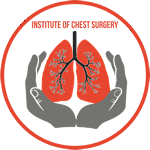Myasthenia Gravis (MG) and Thymoma are two distinct medical conditions that, unfortunately, can sometimes occur together. Myasthenia Gravis is an autoimmune neuromuscular disorder, while Thymoma is a tumor of the thymus gland. When these conditions coexist, it poses unique challenges for both patients and healthcare providers. In this comprehensive guide, we will delve into the treatment options available for managing Myasthenia Gravis and Thymoma simultaneously, focusing on improving patients’ quality of life and maximizing positive outcomes.
Understanding Myasthenia Gravis and Thymoma
1. Myasthenia Gravis (MG)
Myasthenia Gravis is a chronic autoimmune disorder that affects the neuromuscular junction, leading to muscle weakness and fatigue. In this condition, the immune system mistakenly attacks and weakens the muscles, causing difficulties in performing routine tasks like swallowing, speaking, and even breathing. MG can impact any voluntary muscle in the body but commonly affects the muscles controlling eye and eyelid movements, facial expressions, and chewing.
2. Thymoma
Thymoma is a rare tumor that originates in the thymus gland, which plays a vital role in the development and maturation of T-lymphocytes (T-cells) of the immune system. While Thymoma is generally slow-growing and non-invasive, it can sometimes become malignant and spread to nearby tissues.
The Association between Myasthenia Gravis and Thymoma
Although MG and Thymoma are distinct conditions, there is a significant association between the two. Approximately 15% to 20% of MG patients also have Thymoma, and around 30% of Thymoma patients may develop Myasthenia Gravis. This association is not entirely understood, but it is believed to be related to the immune system’s dysregulation.
Treatment Options for Myasthenia Gravis and Thymoma Together
1. Thymectomy
For patients diagnosed with both Myasthenia Gravis and Thymoma, a thymectomy is often recommended. Thymectomy is the surgical removal of the thymus gland and is considered the primary treatment for Thymoma. Moreover, thymectomy has shown significant benefits in MG patients, leading to an improvement in symptoms and reducing the need for immunosuppressive medications.
2. Medications for Myasthenia Gravis
The treatment of Myasthenia Gravis involves various medications aimed at modulating the immune system and improving neuromuscular transmission. Some commonly prescribed medications include:
- Cholinesterase Inhibitors: Drugs like Pyridostigmine help enhance neuromuscular communication and alleviate muscle weakness.
- Immunosuppressants: Medications like Prednisone, Azathioprine, or Mycophenolate mofetil may be used to suppress the overactive immune response.
- Intravenous Immunoglobulin (IVIG): IVIG infusions can provide short-term relief in severe MG cases.
- Monoclonal Antibodies: Rituximab and other monoclonal antibodies target specific immune cells to reduce their impact on muscle function.
3. Radiation Therapy and Chemotherapy for Thymoma
In cases where Thymoma is malignant or aggressive, radiation therapy and chemotherapy are common treatment options. Radiation therapy involves using high-energy rays to target and destroy cancer cells, while chemotherapy uses drugs to kill cancer cells or stop their growth. These treatments are often administered in conjunction to achieve the best results.
4. Targeted Therapy
Targeted therapy is a newer approach used for certain types of Thymoma. It involves drugs that specifically target certain molecules or proteins involved in cancer growth, reducing damage to healthy cells and improving treatment effectiveness.
5. Immunotherapy
Immunotherapy is a groundbreaking treatment that boosts the body’s immune system to fight cancer cells more effectively. It is becoming increasingly studied and utilized in the treatment of Thymoma to improve patient outcomes.
6. Multidisciplinary Care
Managing Myasthenia Gravis and Thymoma together requires a coordinated and comprehensive approach involving various healthcare specialists, including neurologists, oncologists, thoracic surgeons, and supportive care providers. A multidisciplinary team ensures that treatment plans are tailored to the individual patient’s needs, considering their overall health and medical history.
Conclusion
The coexistence of Myasthenia Gravis and Thymoma presents a complex medical scenario that necessitates careful management and treatment planning. Thymectomy remains a cornerstone in the treatment of both conditions, offering potential benefits for symptom improvement and tumor control.
As research and medical advancements continue, new treatment options like immunotherapy and targeted therapy are showing promising results in managing Thymoma. For Myasthenia Gravis, a combination of medications, such as cholinesterase inhibitors and immunosuppressants, helps alleviate muscle weakness and improve daily life.
If you or someone you know is facing the challenge of managing Myasthenia Gravis and Thymoma together, it is essential to consult with a skilled medical team led by professionals experienced in dealing with these complex conditions. Each patient’s case is unique, and a personalized treatment plan can lead to better outcomes and an improved quality of life.







